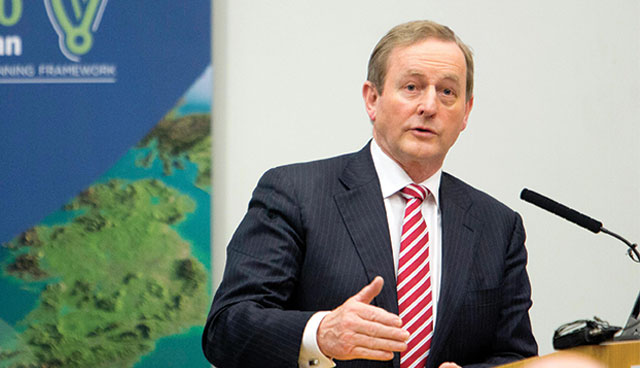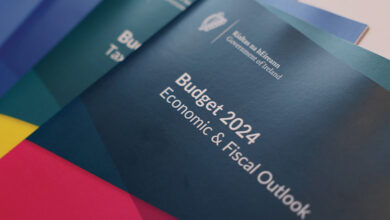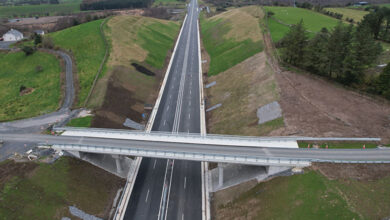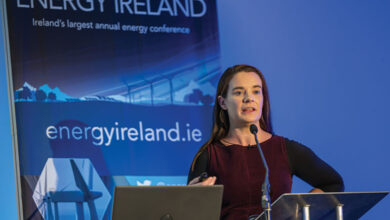Ireland in 2040


As the National Planning Framework, a plan to shape Ireland over the next 30 years, is opened to consultation, eolas looks at the key areas for government focus and the implications of economic concentration in Dublin.
Attempts by the Government to formulate a plan that will scope the future of Ireland’s communities, infrastructure and growth over the next 30 years will be made significantly more difficult because of the minority nature of the current Government, Minister for Housing, Planning, Community and Local Government, Simon Coveney, has admitted.
In an appeal to the opposition not to hold the framework to the ransom in order to extract political concessions, Coveney used the launch of the Framework’s consultation at Maynooth University to state that: “The most difficult thing in this plan will be the politics around it.” Pointing out the potential for opposition to barter concessions in return for support, he added: “If that happens it starts to undermine the credibility of the whole thing. I will be appealing to colleagues to try to make decisions based on evidence, on expertise, as well as politics, in terms of what people and communities are looking for”.
Central to the Government’s plans is the fundamental need to extract the levels of economic activity centred in Dublin and aid the growth development of other regions. Described as potential “sprawl and lop-sided development”, economic growth has already seen just under half of Irish economic activity occur in Dublin, while surrounding towns in the east and midlands such as Meath, Carlow, Kildare and Cavan have been recognised as commuter centres for Dublin. “Business as usual”, explains the Taoiseach, would result in further concentration of population and homes on the eastern side of the county.
The major factors likely to impact on how Ireland is shaped over the next three decades include:
• a population increase of up to 1 million;
• an ageing population, over a fifth of whom will be aged over 65;
• over 500,000 extra people at work, many of whom will seek to travel to locations of high-skilled jobs; and
• at least 500,000 new homes will be needed close top services and amenities.
“Our Plan is a discussion about how to secure sustained, long-term and regionally balanced progress on social, economic and environmental fronts. Now is the time to think about the longer-term future of all parts of this island – and how to plan for that future.” Taoiseach Enda Kenny
The Framework states that unless actions are taken for change: “This will further exacerbate massive and increasingly unmanageable sprawl of housing areas, scattered employment and car-based commuting, presenting major challenges around lop-sided development, under-utilised potential, congestion and adverse impacts on people’s lives and the environment.” Adding that evidence suggests that continued concentration towards Dublin would harm Ireland’s broader economic, social and environmental growth.
Among the negatives highlighted by a failure to change are:
• overall national development will be too Dublin-centred and will sprawl into the surrounding Leinster counties;
• growth of regional cities such as Cork, Limerick, Galway and Waterford will be hindered;
• building housing further from job concentration will lead to rising costs and impacts in terms of commuting, service provision, health and the environment; and
• rural towns and villages, as well as tourism hot spots will increasingly stagnate and decline.
The framework aims to learn from the successes and failure of its predecessor launched in 2002. Successes listed include planning reforms and investment the areas of water services and housing to support it, however, a failure to implement the plan in full, coupled with the economic downturn, meant that the scheme fell short of overall expectations. Now the Government is hoping to build on the stabilisation of the economy to implement a new long-term plan. However, speaking at the launch, Enda Kenny acknowledged that Ireland now faced a “different set of obstacles” than during the previous capital investment plan, signifying the potential challenges posed by Brexit.
Inviting the public to contribute initial views by 16 March to help shape a draft plan for further consultation in the Summer, before being submitted to Government, Damien English, Minister of State for Housing and Urban Renewal says: “I anticipate that people will highlight the need to build up and improve existing communities, whether they be rural villages and small towns that have suffered much in recent years or the renewal and enhancement of inner parts of many of our larger cities and towns, some of which are badly in need of regeneration and re-population.”
Ten key questions being asked for consultation of the National Planning Framework
1. What should Ireland look like in 20 years?
2. How do we ensure that every place can realise its potential?
3. Where will jobs be located and what will those jobs be?
4. Where will we live and what types of housing will be needed?
5. What are the key services people will need?
6. Where will Ireland fit in a wider (geographical) context?
7. What are the planning responses to key environmental challenges?
8. What infrastructure is required – what are the national priorities?
9. How should a National Planning Framework be implemented?
10. What will success look like?





